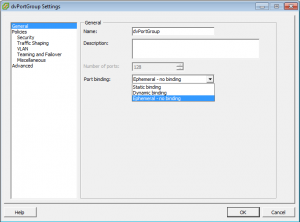I have seen a few people asking questions lately on how you can set the default Path Selection Policy to Round Robin rather than the default Fixed, and thought it might be useful for people out in the field or people wanting to set company standard policies. Unfortunately there is now way to set this through the GUI. You will need to either access the console via Tech Support Mode, or by Remote Tech Support Mode (SSH) to carry out this command. esxcli nmp satp setdefaultpsp –psp VMW_PSP_RR –satp VMW_SATP_SYMM
Archive | VMware Posts
How To: Reconfigure VMware Fusion after Boot Camp re-install
I had a major issue with Boot Camp today on my Mac. After re-creating the Boot Camp partition and re-installing Windows, VMware Fusion could no longer boot that VM. The Cause: Shrank the Mac partition and created a new FAT32 partition that could be shared between my Mac and Windows. What happened next was a disaster, Boot Camp could no longer boot from the Windows Partition. After lots of trials and trying Windows repairs, I gave up and deleted the Boot Camp and FAT32 partitions and started from fresh. Re-installed Windows using Boot Camp and configured. When I then returned to my Mac and opened up Fusion, it was still trying to boot into the old Boot Camp partition. The Fix: Navigate to /Users/{username}/Library/Application Support/VMware Fusion/Virtual Machines Under this folder is a folder called Boot Camp. Delete this folder and re-boot. Once you have re-started Fusion, your Boot Camp VM […]

Ephemeral Ports – What are they?
A few people have been asking what Ephemeral ports are and what is there purpose. This is a quick overview. So what is an Ephemeral port? An Ephemeral Port stops the binding of a dvPort. This resembles the same behaviour in the standard vSwitch. This can be used when port history is not required or relevant. You can see on the screen shot below the three types of Port Binding available on a dvSwitch port group. The three types of port binding available: Static Binding (Default): means that the dvPort will be assigned to the VM at configuration time. Once all the ports are “booked” by VMs, it will not be possible to connect another VM, even if the connected VMs are powered up or not. Dynamic Binding: means that the dvPort will be assigned at the moment of VM power-up. This option allows for over committing the number of […]
Concurrent vSphere Client Connections Limit
There has been some discussions around what the total number of VMware vCenter Concurrent vSphere Client Connections is. Currently there is no limit, but it is recommended to keep this at a total of 30. Anything over this total and performance issues may be experienced. It also depends on how you use the vSphere Client. If you have fewer entities opened in the inventory tree, your vSphere Client puts less burden on the vCenter server therefore it may support more vSphere Client without noticeable performance downgrade. Why? Because for every opened managed entity like virtual machine, the vSphere Client asks vCenter to monitor its status using vSphere PropertyCollector API. The more to monitor, the more burden on the vCenter of course. Thanks to Steve Jin (DoubleCloud.org) for providing the above information.
The New Resource Pool option is grayed out
So today I have been building my home cloud, and came across a little useful point that I had forgot about. When you try to create a resource pool within a cluster, the New Resource Pool… Menu option is greyed out. Now for a couple of seconds I was a little confused, why is this? Then of course I remembered, I had not enabled DRS yet on my cluster (there is currently only one host). I enabled DRS and the option is now available. You can also find an VMware KB article on this here.
